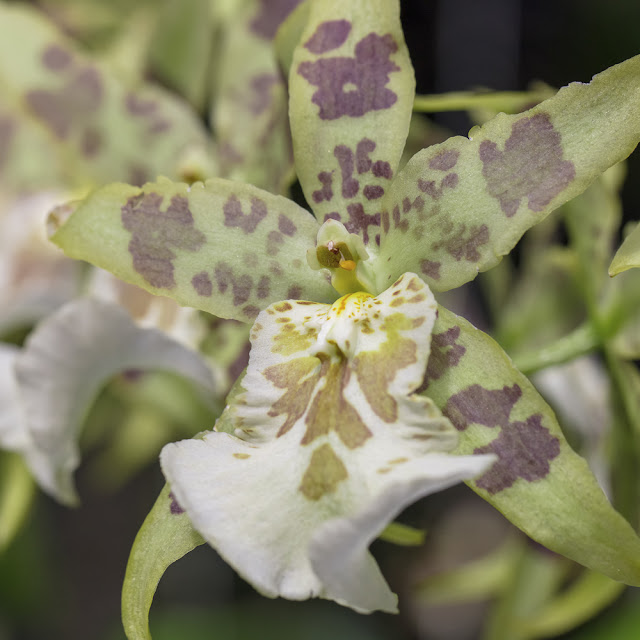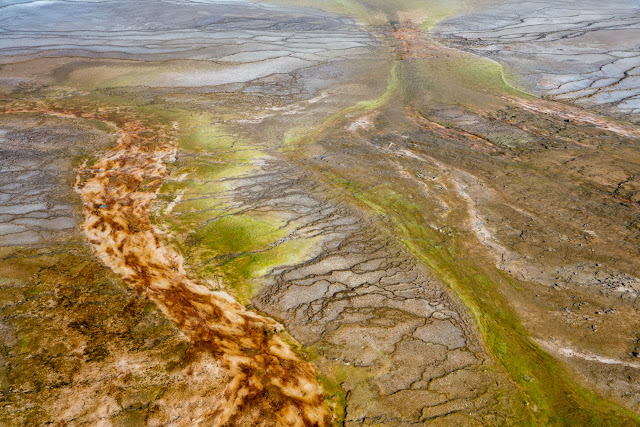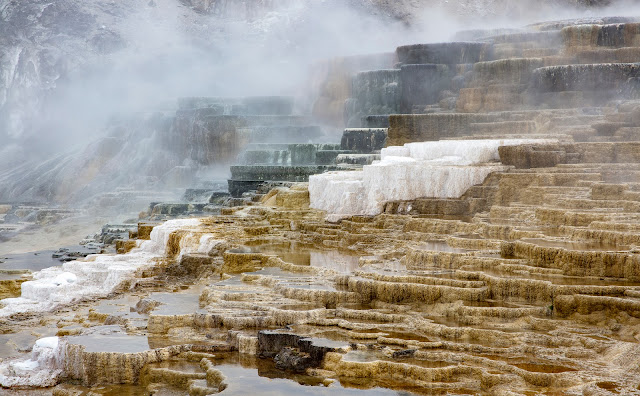Like many bird photographers, I will go a fair distance for a really special bird. Snowy Owls are high on that list. So, in February I drove up across the border into Ontario to follow their sightings reported since the first of January. Pam and I arrived in late morning and began to crisscross local roads until I spotted a bluish white in a pure white field. Can you see how the owls back doesn't match the snow exactly. (I hope your screen is color balanced.)
The bird was actually about 50 yards away, so it wasn't standing out quite like my long lens suggests.
This was a good start. Owls are never as common as crows in an area. Continuing on down this dirt road, Pam asked what the shape in the spindly tree was. Binoculars revealed falcon, namely a female Merlin.
Like the owl, as long as we stayed in the car, the bird paid little attention to us. I inched the car up several times before I got a little too close, and the Merlin flew farther up the road and out of sight.
We continued slowly along the road looking for owls. Over the crest we saw the Merlin and again got close. Eventually, it signaled that it was about to fly.
We continued our search encouraged by our early good luck. Anyway, we had all of the next day.
The sky was filled with light snow flurries through the night. At early light, we headed to a location where I had seen birds twice in December. Assuming the Snowy Owls would again be on the ground, we trained our binoculars across both sides of the road. Somehow, I looked up toward a telephone line that parallels the road and let out an exclamation (that I won't put in print). There was an owl perched on top of the nearest telephone pole looking right at us.
It tolerated us, and ignored the snow plow that passed beneath. I got out after the first photos and set up on my tripod. Over fifteen minutes, as my hands became numb, I casually moved closer at a tangent to the direct approach. Usually, I took a few steps when it was looking away.
The snow continued, and at times the bird fluffed up and shook off the snow from its head and back. The cold eventually got the best of me, and I slowly retreated without the bird ever shifting away.
This was a good start to the day. We moved on to continue our search. I began to wonder if the snow was perhaps shifting the owls up onto perches. Turning onto a dirt road, I spotted another Snowy on a fence post. I got within about 30 yards and turned the car sideways to shoot out the side window. It held its position.

All was looking good to get closer until a large truck approached at high speed with a wide swath of blowing snow. I had to pull off to the side and the owl was gone. It was still a good morning.
Farther along the same road, I saw a resident coming out to fill some bird feeders and stopped to
talk. He had drawn in a good selection of small birds. Once he was back inside, I had a few Snow Buntings perch close. They are very skittish, so this was good luck.
Soon it was midday and time to find the local cafe before continuing. Then it was time to explore some new locations. I had my heart on finding one of the large flocks of Snow Bunting that seem to blow into the corn field stubble with every gust of wind. The plan was to pick a likely field and just let the flock come to us. Gave it a good wait twice with no luck other than a shy Mourning Dove taking refuge from the wind.
We had one more road to try, and it was a hit. About 60 yards out from the road was a long row of piled manure with an odd white clump of snow. Make that a Snowy Owl. It was far enough away that I could pull off onto a tractor path and assemble my tripod and long lens for a stalk. The path angled off from a direct line to the owl, and it allowed that I was just passing by. I cut the distance in half and made a favorite image.
This was a pretty good day. After dinner, a review of the coming morning's weather was discouraging. Temperature -10°F and wind chill near -30 °F. Brutal. Headed for home in the morning.
Paul Schmitt

















































